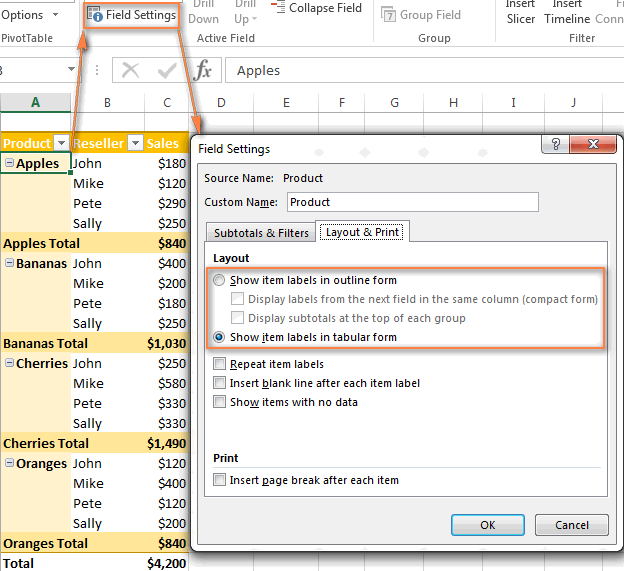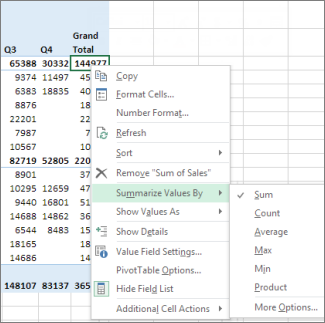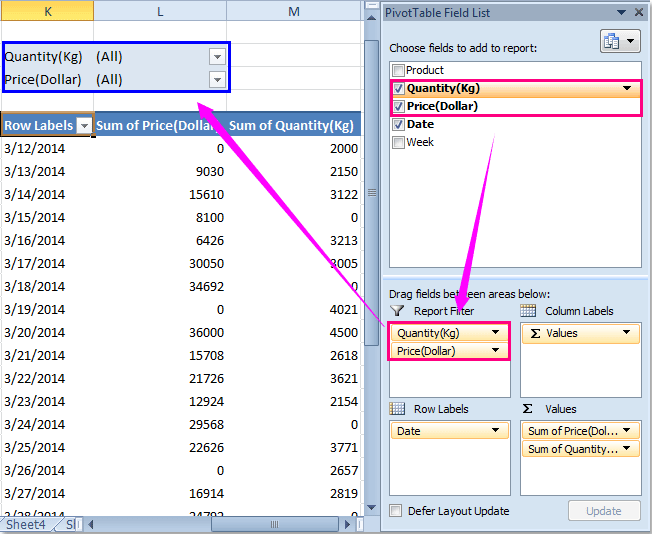

- HOW TO MAKE SOMETHING APPEAR IN ROWS ON EXCEL PIVOT CHART HOW TO
- HOW TO MAKE SOMETHING APPEAR IN ROWS ON EXCEL PIVOT CHART PLUS
Naturally, you are not limited to counting unique rows based only on two columns, the Excel COUNTIFS function can process up to 127 range/criteria pairs. =SUM(IFERROR(1/IF($A$2:$A$10"", FREQUENCY(IF(EXACT($A$2:$A$10, TRANSPOSE($A$2:$A$10)), MATCH(ROW($A$2:$A$10), ROW($A$2:$A$10)), ""), MATCH(ROW($A$2:$A$10), ROW($A$2:$A$10))), 0), 0)) Count unique and distinct rows in ExcelĬounting unique / distinct rows in Excel is akin to counting unique and distinct values, with the only difference that you use the COUNTIFS function instead of COUNTIF, which lets you specify several columns to check for unique values.įor example, to count unique or distinct names based on the values in columns A (First Name) and B (Last Name), use one of the following formulas: If there is no way you can add a helper column to your worksheet, you can use the following complex array formula to count case-sensitive distinct values without creating an additional column: =IF(SUM((-EXACT($A$2:$A2,$A2)))=1,"Distinct","")Īs you remember, all array formulas in Excel require pressing Ctrl + Shift + Enter.Īfter the above formula is finished, you can count "distinct" values with a usual COUNTIF formula like this: The formula is basically the same as the one we used to count case-sensitive unique values, with one small change in a cell reference that makes a great difference: Similarly to counting case-sensitive unique values, the easiest way to count case-sensitive distinct values is to add a helper column with the array formula that identifies unique values including first duplicate occurrences. =SUM(IF(ISNUMBER(A2:A10),1/COUNTIF(A2:A10, A2:A10),"")) Count case-sensitive distinct values in Excel =SUM(IF(ISNUMBER( range),1/COUNTIF( range, range),""))įor example, to count all different numbers in range A2:A10, use the following formula: If a column where you want to count distinct values might contain blank cells, you should add an IF function that will check the specified range for blanks (the basic Excel distinct formula discussed above would return the #DIV/0 error in this case): Count distinct values ignoring empty cells Please remember that all of the below formulas are array formulas and require pressing Ctrl + Shift + Enter. Formulas to count distinct values of different typesĪs is the case with counting unique values in Excel, you can use variations of the basic Excel count distinct formula to handle specific value types such as numbers, text, and case-sensitive values. And because all unique values appear in the array as 1's (1/1=1), the final result returned by the formula is the total number of all different values in the list. When one of these functions adds up the values in the array, the sum of all fractional numbers for each individual item always yields 1, no matter how many occurrences of that item exist in the list. ĭoesn't make much sense so far? That's because we haven't applied the SUM / SUMPRODUCT function yet. Once you do this, Excel will automatically enclose the formula in. This is an array formula, so be sure to press Ctrl + Shift + Enter to complete it. The solution is to use the SUM function in combination with IF and COUNTIF: Supposing you have a column of names in your Excel worksheet, and you need to count unique names in that column.

How do you do that? Easier than you may think :) Below you will find a few formulas to count unique values of different types. You have a list of data and you need to find out the number of unique values in that list. Here's a common task that all Excel users have to perform once in a while. Automatic count of distinct values in a pivot table.Counting case-sensitive distinct values.Count distinct values ignoring blank cells.The following screenshot demonstrates the difference:Īnd now, let's see how you can count unique and distinct values in Excel using formulas and PivotTable features.
HOW TO MAKE SOMETHING APPEAR IN ROWS ON EXCEL PIVOT CHART PLUS
unique values plus 1 st occurrences of duplicate values. Distinct values - these are all different values in the list, i.e.Unique values - these are the values that appear in the list only once.But for the sake of clarity, let's define the terms first. And today, we are going to explore different ways to count unique values in Excel. If you have been visiting this blog on a regular basic, you already know the Excel formula to count duplicates. And sometimes, you may want to count only the distinct (different) values.

When working with a large dataset in Excel, you may often need to know how many duplicate and unique values are there. We will also discuss a number of formula examples for counting unique names, texts, numbers, cased-sensitive unique values, and more.
HOW TO MAKE SOMETHING APPEAR IN ROWS ON EXCEL PIVOT CHART HOW TO
In this tutorial, you will learn how to count unique values in Excel with formulas, and how to get an automatic count of distinct values in a pivot table.


 0 kommentar(er)
0 kommentar(er)
